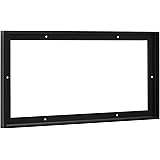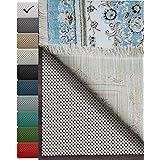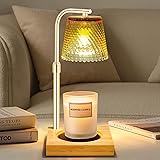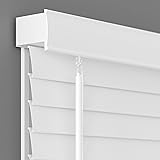Building custom storage solutions presents unique opportunities. Sometimes, traditional methods blend seamlessly with modern materials. We often hear about challenges with off-the-shelf furniture. These can include issues with fit, durability, or specific design needs. The video above offers an excellent demonstration. It showcases how expert carpenters construct a cement wardrobe framing with plywood. This technique provides both robustness and aesthetic appeal. It addresses common homeowner demands for integrated, long-lasting storage.
The Robust Appeal of Cement Wardrobe Framing
Cement structures form the backbone of many homes. Their inherent strength is undeniable. Integrating wardrobes directly into these structures offers significant advantages. It ensures unparalleled durability against wear and tear. Industry reports indicate custom built-ins often provide a 30-50% longer lifespan. This surpasses typical freestanding furniture units.
Moreover, cement is resistant to pests and moisture. This creates a highly secure and stable storage environment. The thermal mass of cement also helps regulate internal temperatures. This protects contents from extreme fluctuations. Such construction methods are highly valued for their longevity.
Why Integrate Plywood with Cement?
While cement provides strength, plywood introduces versatility. Plywood allows for custom finishes and intricate designs. It is significantly lighter than solid wood or full cement doors. This reduces stress on hinges and frames. Data shows plywood also offers superior screw-holding capacity. This is critical for robust hardware installation.
The combination creates a robust yet aesthetically pleasing unit. Cement forms the rigid shell. Plywood constructs smooth, operable doors and internal compartments. This hybrid approach optimizes both form and function. It delivers a modern look with foundational durability.
Precision in Custom Wardrobe Construction
The video demonstrates meticulous attention to detail. The wardrobe frame measures precisely 51 inches by 51 inches. This exactitude is crucial for seamless integration. Plywood doors, or “pallay,” measure 22.5 inches wide by 46.5 inches high. These dimensions ensure proper fit and clearance. Precise measurements minimize installation issues. They also contribute significantly to the final aesthetic.
The cement frame has a “jadai” (thickness) of 1.5 inches. This provides ample structural support. It also allows for secure attachment of plywood elements. Such specifications are key to a lasting build. They exemplify expert-level carpentry standards.
Selecting Optimal Materials: Plywood and Hardware
Material selection significantly impacts a wardrobe’s performance. The use of 25mm thick plywood for the doors is notable. This thickness offers superior rigidity and resistance to warping. Structural engineering benchmarks often recommend 25mm plywood. This is for large doors to prevent sagging over time. It ensures stability and smooth operation.
Hardware choices further enhance functionality and security. The use of Godrej locks ensures high security. Three 3-inch hinges per door are standard for robust support. This configuration distributes weight evenly. It also prevents premature wear. Stopper mechanisms and securing chains add to the operational safety. These elements safeguard against accidental slamming or misalignment. These specifications align with professional building codes.
Step-by-Step Framing and Installation
The framing process begins with establishing the cement structure. Once cured, the plywood frames are meticulously cut. These frames are then securely attached to the cement openings. Expert joinery techniques ensure a firm, stable connection. This is often achieved using expansion bolts or strong adhesives. These methods ensure long-term stability.
Next, the internal marble shelves are installed. Marble provides a durable, elegant surface. It also offers excellent resistance to moisture. The double doors are then carefully mounted. Precision in hinge alignment is paramount here. This ensures smooth, effortless opening and closing. Each step builds on the last, guaranteeing structural integrity.
Ensuring Durability and Longevity
Durability in custom wardrobes stems from several factors. Proper preparation of the cement surface is essential. This ensures optimal adhesion for plywood elements. High-quality plywood, specifically 25mm thick, resists deformation. It withstands daily use without issues. The use of three heavy-duty 3-inch hinges per door is a critical design choice. This prevents sagging and extends the life of the doors. This robust hardware prevents common failures. It ensures decades of reliable performance.
Furthermore, appropriate finishing treatments are vital. These treatments protect the plywood from moisture and scratches. They enhance the overall aesthetic appeal. Regular maintenance also plays a role in longevity. This includes periodic inspection of hinges and locks. Such practices ensure that the cement wardrobe framing remains pristine.
Beyond the Basics: Design and Aesthetic Considerations
The final appearance of a custom wardrobe is paramount. Double doors, as featured, offer broad access to contents. The external handles and a single Godrej lock simplify operation. These elements contribute to a clean, integrated look. The choice of finish on the plywood doors significantly impacts the room’s ambiance. This ensures the wardrobe complements the existing decor. It transforms functional storage into an architectural feature.
Internal design also merits attention. The inclusion of marble shelves provides a premium touch. It enhances the visual appeal of the interior. The contrast of the strong cement frame with refined plywood doors creates a stylish piece. This demonstrates how thoughtful design elevates practical constructions. Such careful design is key to maximizing a cement wardrobe framing project’s impact.











